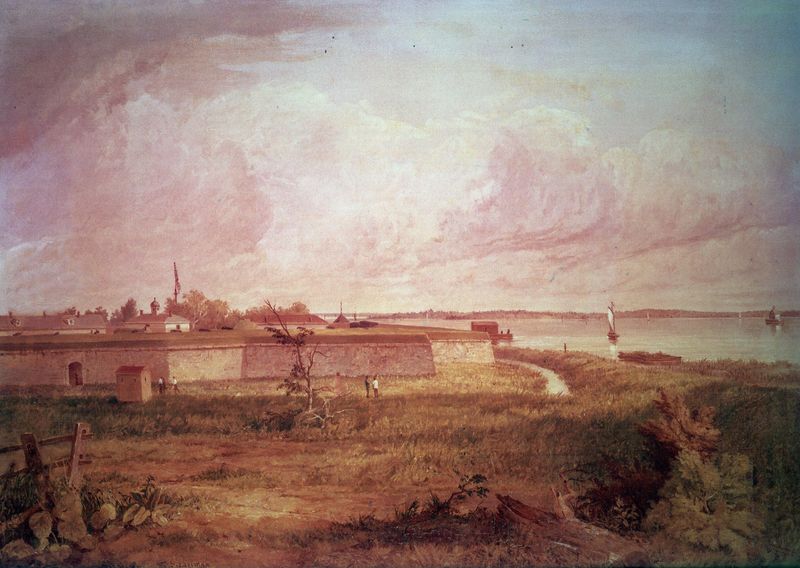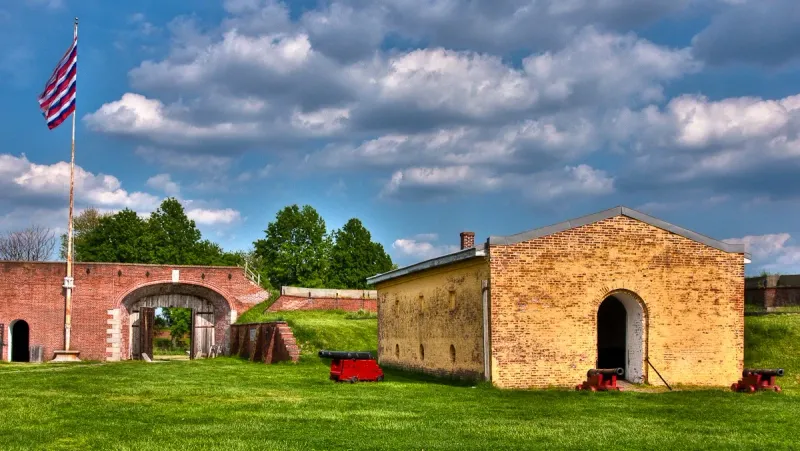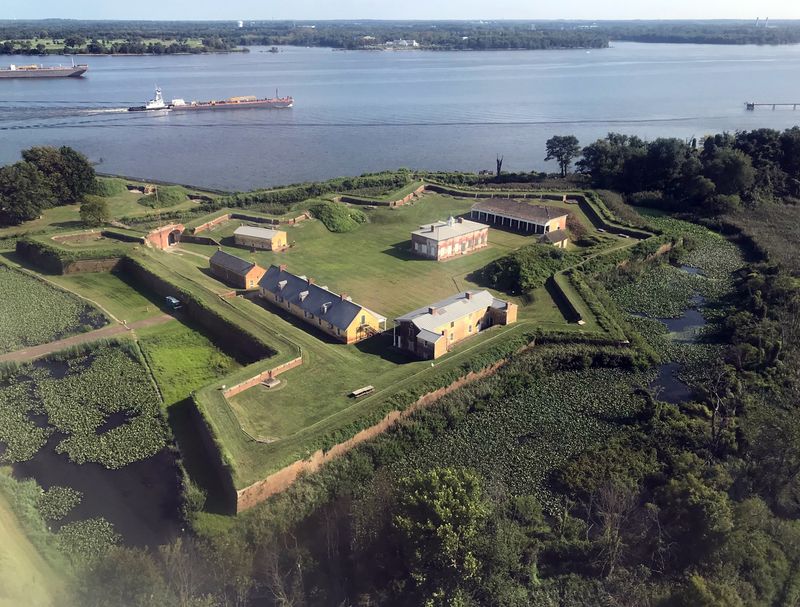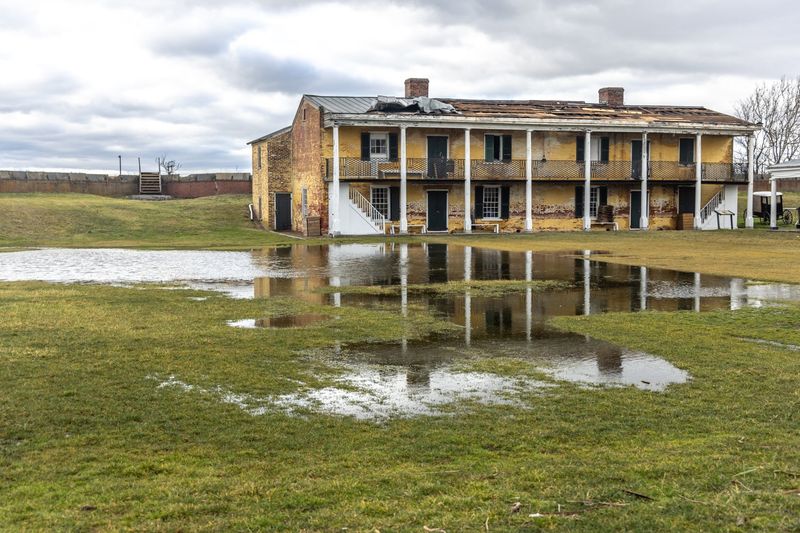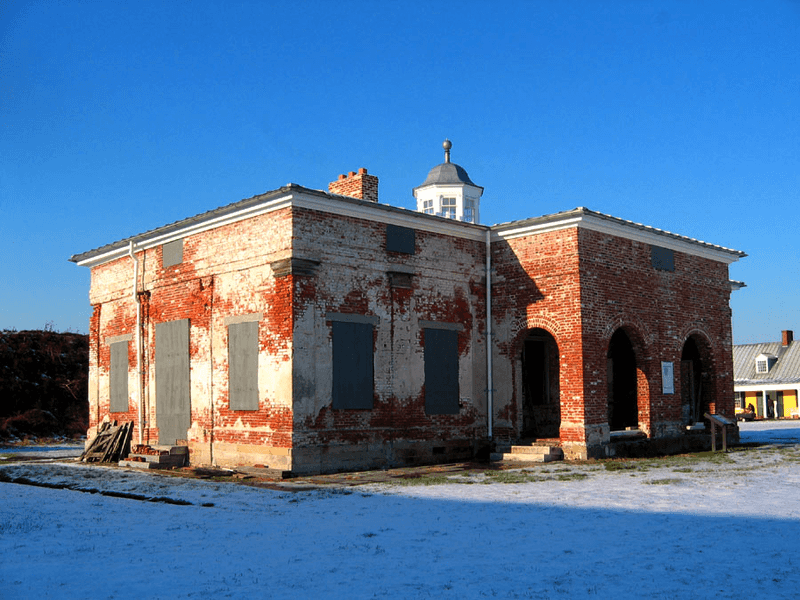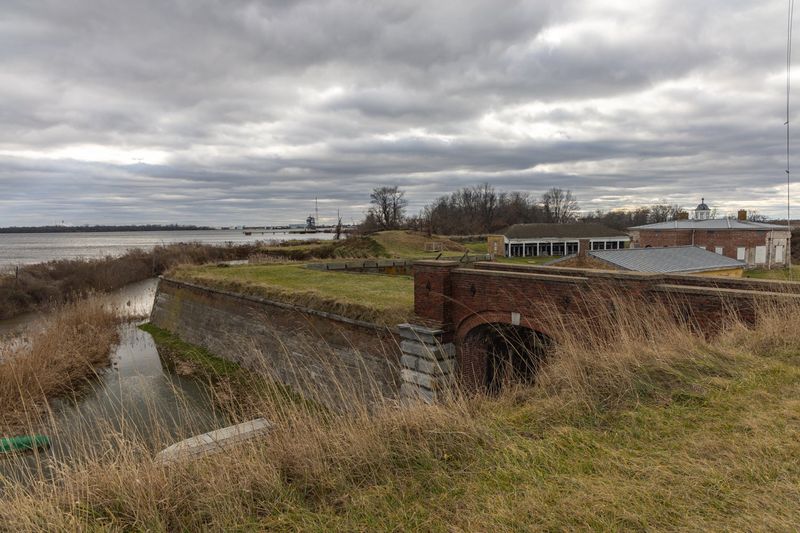Nestled along the Delaware River stands a remarkable piece of American history that predates America itself. Fort Mifflin, a stone sentinel that has witnessed the birth and growth of our nation, stands today as a living monument to our country’s resilience.
From the Revolutionary War to the Civil War and beyond, this extraordinary fortress has played crucial roles in shaping American history while somehow surviving centuries of conflict and change.
1. Colonial Origins Before Independence
Walking through Fort Mifflin’s gate is literally stepping back to colonial times. British engineers designed and built this strategic defense post in 1771, five years before the Declaration of Independence was even signed.
The fort originally protected British colonial interests along the Delaware River, controlling access to Philadelphia’s busy harbor. King George III never imagined the fort would later be used against his own forces.
The sturdy stone and earthwork construction reflects 18th-century military engineering principles that have withstood 250 years of weather, warfare, and time.
2. Revolutionary War Heroics
Fort Mifflin earned its reputation as “the fort that saved America” during a pivotal 1777 battle. For 40 days, a small American garrison withstood brutal bombardment from British warships, sacrificing themselves to buy crucial time.
While the fort eventually fell, the delay allowed Washington’s army to safely reach winter quarters at Valley Forge. Without this heroic stand, the Continental Army might have been crushed before it could regroup.
Over 400 American defenders were killed or wounded during what became the largest bombardment of the Revolutionary War.
3. Civil War Transformation
Nearly nine decades after its Revolutionary War service, Fort Mifflin received a military makeover. The Union Army reinforced its aging walls and installed new artillery positions to protect Philadelphia from potential Confederate naval attacks.
Engineers modernized the fort with brick-lined bombproofs and gun emplacements designed for newer, more powerful cannons. The renovations blended 18th-century architecture with 19th-century military technology.
The fort’s strategic location made it valuable for protecting the Philadelphia Navy Yard, an essential Union facility for building and repairing warships.
4. Prison for Southern Soldiers
The stone walls that once kept enemies out now kept prisoners in during the Civil War. Fort Mifflin’s casemates and barracks were converted into cramped cells for Confederate prisoners, Union deserters, and military criminals.
Guards patrolled the ramparts while hundreds of prisoners endured harsh conditions below. Disease spread quickly in the damp, overcrowded quarters, and many prisoners never left alive.
Military records show that discipline was brutally enforced, with floggings and solitary confinement in the fort’s darkest chambers common punishments for those who broke rules.
5. Battle Scars Preserved in Stone
History buffs marvel at the visible wounds Fort Mifflin still bears from centuries of conflict. Revolutionary War cannonballs remain embedded in the fort’s outer walls, frozen in time since British ships bombarded the position in 1777.
Civil War-era musket ball impacts pockmark the parade ground walls. Each scar tells a story of the fort’s violent past and remarkable endurance.
Restoration efforts have carefully preserved these battle marks rather than repairing them, allowing visitors to literally touch the impact points where history was violently made.
6. Rare Surviving Military Architecture
Fort Mifflin stands as one of America’s last authentic 18th-century forts. While most colonial-era military structures have crumbled or been completely rebuilt, Fort Mifflin retains about 80% of its original structural elements.
The parade ground, officer quarters, and arsenal maintain their original layouts. Engineers marvel at the ingenious drainage systems and defensive angles that have survived centuries of flooding and erosion.
Architectural historians consider the fort a priceless example of European military design adapted to North American conditions, blending French, British and colonial building techniques.
7. America’s Most Haunted Fortress
Spend a night at Fort Mifflin and you might meet residents from centuries past. Paranormal investigators rank it among America’s most haunted locations, with documented phenomena including disembodied voices, floating orbs, and sudden temperature drops.
The most famous ghost, “The Screaming Lady,” is believed to be Elizabeth Pratt, who died of heartbreak after her daughter eloped. Visitors report hearing her wails echoing through the officer quarters.
Other spectral inhabitants include a faceless man wandering the artillery shed, Revolutionary War soldiers still manning their posts, and Civil War prisoners roaming their former cells.
8. Lincoln’s Military Justice Center
President Lincoln’s administration repurposed Fort Mifflin as a grim center for military justice during the Civil War. Special tribunals held court-martials in the officers’ quarters, swiftly determining the fate of soldiers accused of desertion, spying, or other serious offenses.
The northwest corner became known as “Deserter’s Corner,” where firing squads carried out executions. Records indicate dozens of Union soldiers met their end against these walls after being convicted of abandoning their posts.
Military police maintained a constant presence, escorting prisoners to trials and punishments within the fort’s imposing perimeter.
9. Modern Living History Experiences
Fort Mifflin isn’t just a static museum—it’s a vibrant living history center. Weekend reenactors in period-authentic uniforms demonstrate black powder musket drills and fire the fort’s restored cannons, creating thunderous booms that echo across the Delaware.
Candlelight tours recreate the fort’s appearance before electricity, with guides in historical dress sharing tales of daily military life. School groups can participate in immersive programs where students take on roles of soldiers and civilians from different time periods.
The annual World War II weekend expands the fort’s historical interpretation beyond its early American roots.
10. Predating America’s Great Cities
Fort Mifflin was already a veteran military post when many famous American cities were mere settlements. While Philadelphia existed before the fort, Chicago wasn’t founded until 1833, some 62 years after Fort Mifflin’s construction.
Washington D.C. wasn’t established as the national capital until 1790. Atlanta, Denver, and San Francisco were still wilderness when Fort Mifflin’s cannons first fired.
The fort’s walls have stood through 45 presidential administrations, from George Washington to Joe Biden, making it one of the longest continuously existing structures in American military history.
11. Time Capsule of American Military Evolution
Fort Mifflin offers a rare three-dimensional timeline of American military development. The original 1771 stone walls stand alongside Civil War-era brick bombproofs, World War I concrete gun emplacements, and even World War II anti-aircraft positions.
Each military era left its mark without completely replacing what came before. Visitors can literally walk through the evolution of American defense strategies from muskets to missiles.
Archaeological digs continue uncovering artifacts spanning 250 years—from Revolutionary War uniform buttons to Civil War minié balls to World War II C-ration tins, all from the same historic ground.

